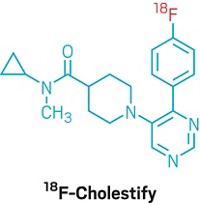Advertisement
Grab your lab coat. Let's get started
Welcome!
Welcome!
Create an account below to get 6 C&EN articles per month, receive newsletters and more - all free.
It seems this is your first time logging in online. Please enter the following information to continue.
As an ACS member you automatically get access to this site. All we need is few more details to create your reading experience.
Not you? Sign in with a different account.
Not you? Sign in with a different account.
ERROR 1
ERROR 1
ERROR 2
ERROR 2
ERROR 2
ERROR 2
ERROR 2
Password and Confirm password must match.
If you have an ACS member number, please enter it here so we can link this account to your membership. (optional)
ERROR 2
ACS values your privacy. By submitting your information, you are gaining access to C&EN and subscribing to our weekly newsletter. We use the information you provide to make your reading experience better, and we will never sell your data to third party members.
Biological Chemistry
Patent Picks: PET Imaging
A look at recent patenting activity in the development of 18F-labeled radiotracers, brought to you by C&EN and CAS
by Mitch Garcia , Science, Technology & Education Department
October 26, 2015
| A version of this story appeared in
Volume 93, Issue 42

Positron emission tomography (PET) helps doctors and researchers capture detailed three-dimensional images of molecular processes occurring in the body. To obtain those images, they inject a positron-emitting isotope, otherwise known as a radiotracer, into patients or animals and record the radiation emitted with a PET scanner. Compared with other biocompatible isotopes, fluorine-18 remains stable for a relatively long time—its half-life is 109.8 minutes—and is therefore currently the most popular isotope used in radiopharmaceuticals. Chemists design tracers containing 18F to mimic or target molecules or tissues in the body. For example, fluorodeoxyglucose, a radiolabeled analog of glucose, is used to determine the size, shape, and aggressiveness of tumors, which take up more sugars than healthy tissue. The development of new PET probes and new methods for making PET probes will widen the range of biological processes and diseases that can be monitored in the body. Here, we highlight three advances in 18F PET probes from the databases of Chemical Abstracts Service (CAS).
Installing 18F in the aromatic rings of a PET probe is no easy task when time is limited. Because the isotope has a half-life of only 109.8 minutes, chemists need to synthesize and deliver radiotracers to patients quickly. A recent patent by Neil Vasdev, Benjamin H. Rotstein, Nickeisha A. Stephenson, and Huan Liang of Massachusetts General Hospital and Harvard Medical School describes a rapid, selective, one-step technique for radiolabeling aromatic rings (US 20150252007). In the past, chemists have used hypervalent iodonium species as transfer reagents to help fluorinate aromatic rings, but the methods were not selective enough and generated unwanted by-products that needed to be removed in a time-consuming purification. A new spirocyclic hypervalent iodine(III) complex overcomes these limitations, Vasdev tells C&EN. This stable crystalline complex reacts readily and selectively with 18F– (shown); the radiofluorination step takes only 10 minutes to finish. The team has made 18F analogs of phenylalanine, estrone, benzyl azide, and uracil with their strategy. Since the initial patent filing, the 18F-labeling method has been validated for human use, Vasdev says, and is currently being licensed from MGH by Ground Fluor Pharmaceuticals.
Killer T cells are white blood cells that seek out and kill troublemakers in the body: virus-infected cells and cancer cells. A team led by Anna M. Wu from the University of California, Los Angeles, has engineered 18F-labeled antibody fragments that bind with a transmembrane glycoprotein, CD8, found on the surface of killer T cells (US 20150191543). By radiolabeling these T cells, scientists should gain a better understanding of the complex nature of killer-T-cell localization, proliferation, and migration in the body, Wu tells C&EN. For example, the UCLA team uses the methodology to track how T cells respond to different immune-stimulating drugs. One of the advantages of the method, Wu says, is being able to visualize the distribution of T cells throughout the body in real time. The new antibody engineering method is currently being licensed by California-based immune imaging firm ImaginAb.
Alzheimer’s disease is a poorly understood neurodegenerative condition that accounts for 60–70% of dementia cases. The brain degeneration has been linked to the accumulation of both plaques made of amyloid-β peptides and fibrils made of hyperphosphorylated tau protein. Eli Lilly & Co. has patented a radiotracer, [18F]T807, that has high affinity for tau in the brain compared with amyloid-β (WO 2015047902). Researchers want to track tau in the brain because pathology studies have shown that the appearance of tau is a better predictor of cognitive problems than amyloid-β is. The first human brain images with [18F]T807 were reported in 2013 (J. Alzheimer’s Dis., DOI: 10.3233/jad-122059), and a Phase II clinical trial, sponsored by Washington University School of Medicine, is currently enrolling patients to determine whether the probe can be used as an early marker of cognitive decline prior to the appearance of dementia symptoms.
↑ Top
Jump to Topics:
- Fluorinating Aromatic Rings Quickly
- Killer Imaging With Antibody Fragments
- Probing Alzheimer’s Progression
Mitch Garcia wrote this month’s PatentPicks in collaboration with CAS. This feature reports on trends CAS scientists observe from patents in CAS databases. Please send comments and suggestions to patentpicks@acs.org





Join the conversation
Contact the reporter
Submit a Letter to the Editor for publication
Engage with us on Twitter